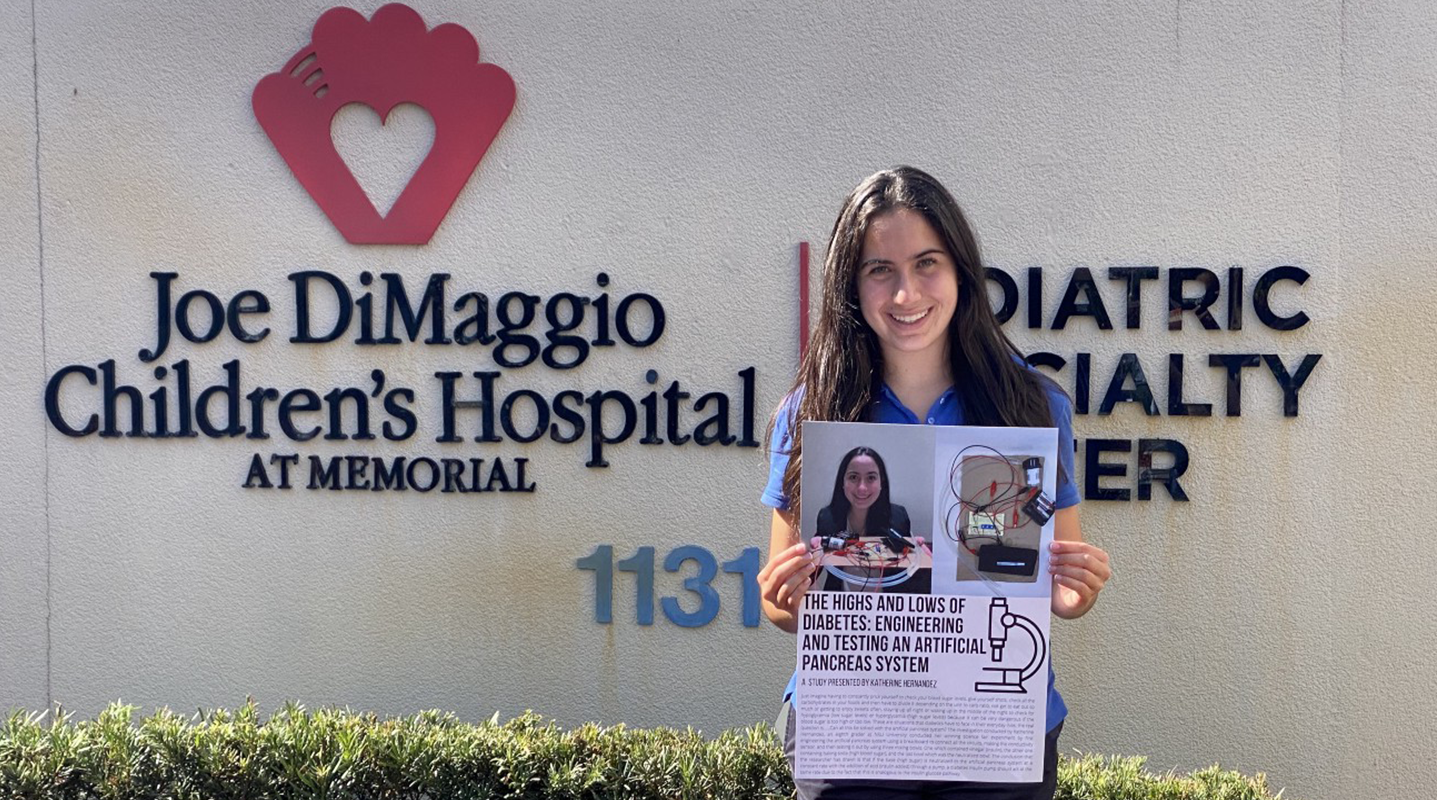Highs and Lows of Diabetes
November 05, 2021

In honor of November being Diabetes Awareness Month, we wanted to share this inspiring article written by a sister of one of our pediatric patients. Katherine, a local high school freshman, won second place at her school's science fair for engineering an artificial pancreas to help monitor blood glucose in people with diabetes. Inspired by her younger sister's type 1 diabetes diagnoses, learn how her research project could potentially monitor blood glucose levels using an artificial pancreas.
Inspiration for Research Project
Imagine having to constantly prick yourself to check your blood sugar levels, calculate the carbohydrates in your foods, and staying up all night to check for hypoglycemia or hyperglycemia to make sure your blood sugar is within the healthy range. These are examples of what people diagnosed with diabetes must face everyday.
Does this seem easy to you? Well, it doesn’t seem easy to me. But, the real question is: can all this be solved with an artificial pancreas system? This was the question I had after my sister was diagnosed with type I diabetes in January of 2020. That day not only changed my sister’s life forever, but also my entire family.
The annual science fair competition was quickly approaching and I wanted my science project to be meaningful because I normally picked topics I wasn't interested in researching. This was an opportunity to research something that was important to me and my family. I chose to research an artificial pancreas system to learn about what my sister was experiencing, and to help my family understand what this life-changing diagnosis meant for children and teenagers like my sister.
My sister was touched that I chose to do my science project about her because it helped her better understand what it meant to be a newly diagnosed diabetic. When I presented her my project, she cried because she felt she wasn’t alone and we were there to help her as a family.
Designing an Artificial Pancreas System
To bring awareness to type I diabetes, I engineered and tested an artificial pancreas system using a breadboard to connect all the circuits, made the conductivity sensor, and tested the system by using three mixing bowls containing vinegar (insulin), baking soda (high blood sugar), and a neutralized bowl. My hypothesis was that if the base/baking soda (high blood sugar) is neutralized in the artificial pancreas system at a constant rate with the addition of acid/vinegar (insulin) through a pump, a diabetes insulin pump should act at the same rate because this is comparable to how the insulin glucose pathway works.

I wanted to compare how the artificial pancreas system worked to how my sister checked her blood glucose by pricking her finger several times a day (and administered insulin injections throughout the day) to determine if the artificial pancreas system would control the sugar levels at a better rate. I did this by documenting my sister's sugar levels during consistent periods of the day for two weeks and compared it to the model.
Outcomes
My research found the artificial pancreas system, in comparison to regular glucose monitoring of blood sugar, is not in a range that supports the claim done by CNN. The study found that “the artificial pancreas led to a nearly 11% improvement overall in keeping blood glucose within range, offering an extra 3 hours a day compared to continuous glucose monitoring and an insulin pump.”
Graph 1

Graph 1 shows how the pump works. The top blue line represents the base increasing as more solution goes into the tube in the insulin is taken through the tube, the pump, and into the high blood sugar as the acid levels (red line) decrease because insulin represents acidity. If the base turned green, it's the right pH. If the base turned yellow, that would have meant the sugar went too low.
Graph 2

Graph 2 shows the data from my sister regularly checking her blood glucose level by pricking her finger. The reason the researcher choose to incorporate this graph is because the individual does not have an artificial pancreas and uses regular glucose monitoring and the sugars and not in the range which supports the claim done by CNN. “The artificial pancreas led to a nearly 11% improvement overall in keeping blood glucose within range, offering an extra 3 hours a day compared to continuous glucose monitoring and an insulin pump, the study found.”
Conclusion
My project won second place in the category of Biomedical Engineering in Broward County. Although this was an amazing accomplishment, I truly enjoyed teaching my sister and other people diagnosed with type 1 diabetes about their condition. As the title of my project says, metaphorically, there are highs and lows of diabetes, but we are all stronger than the highs and lows we face.
